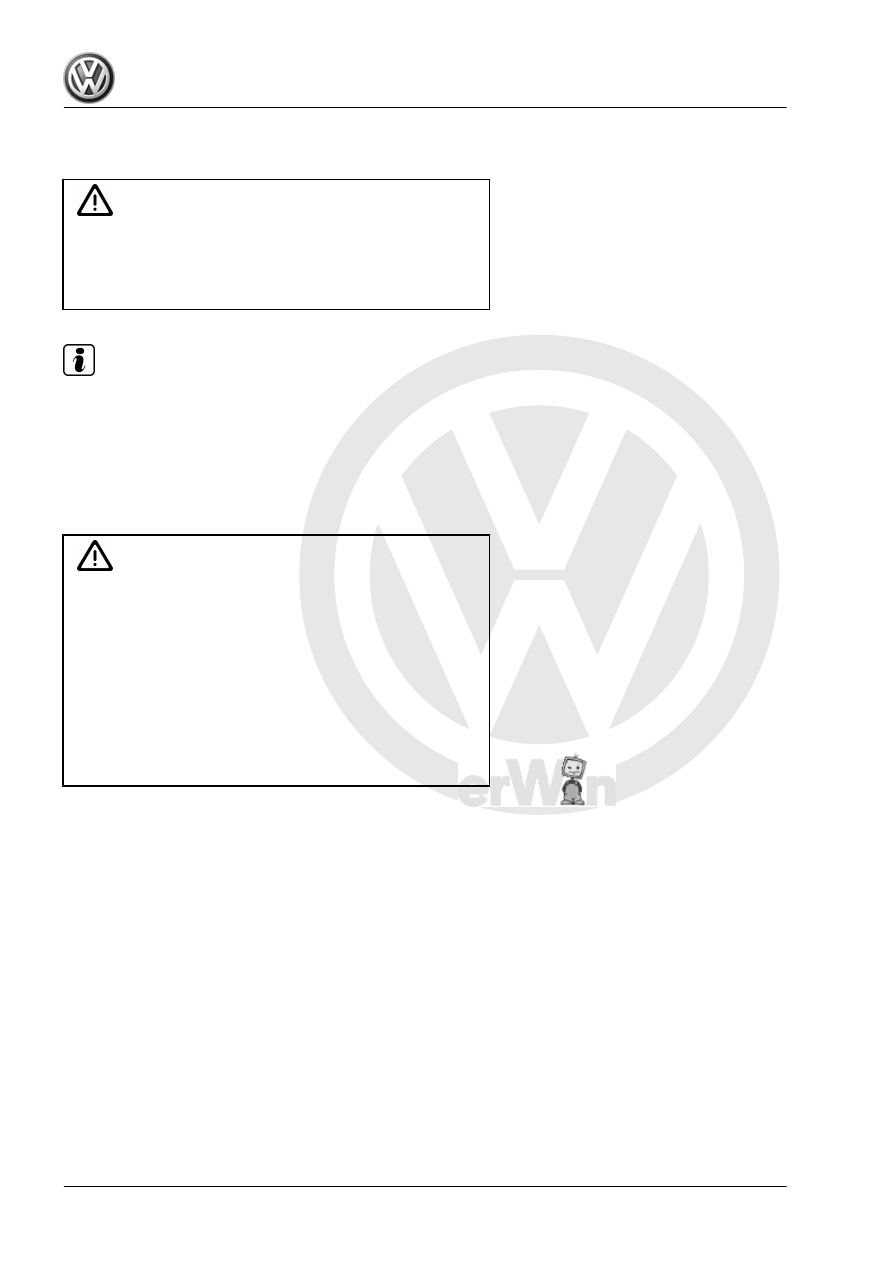Volkswagen Golf / Golf GTI / Golf Variant. Manual - part 447

2.3
Safety Precautions when Tow Starting
and Towing
Caution
Danger of causing damage to the transmission.
♦ When towing the vehicle, the selector lever must be in “N”
and the vehicle must not be towed further than 50 km (31
miles) and not faster than 50 km/h (31 mph).
Note
The engine cannot be tow started, for example, if the battery is
too weak or if the starter is not working.
2.4
Safety Precautions during Road Test
with Testing Equipment
If Testers and Measuring Equipment Must Be Used during a Test
Drive, Follow the Points Below:
WARNING
There is a risk of an accident due to distractions and improperly
secured testing equipment.
The front passenger airbag poses a risk if it deploys during an
accident.
• Operating testing equipment while driving is a distraction.
• Testing equipment that is not secured properly increases
the risk of personal injury.
♦ Always secure testing equipment on the rear seat using a
strap and have a second person in the rear seat operate
it.